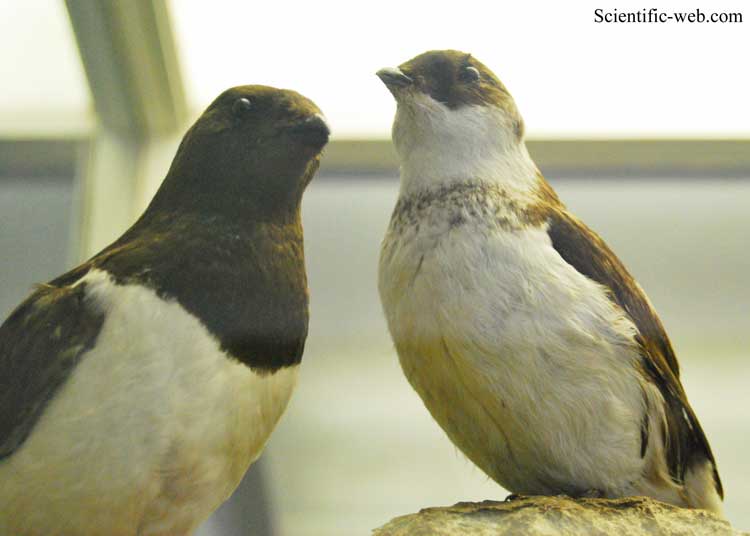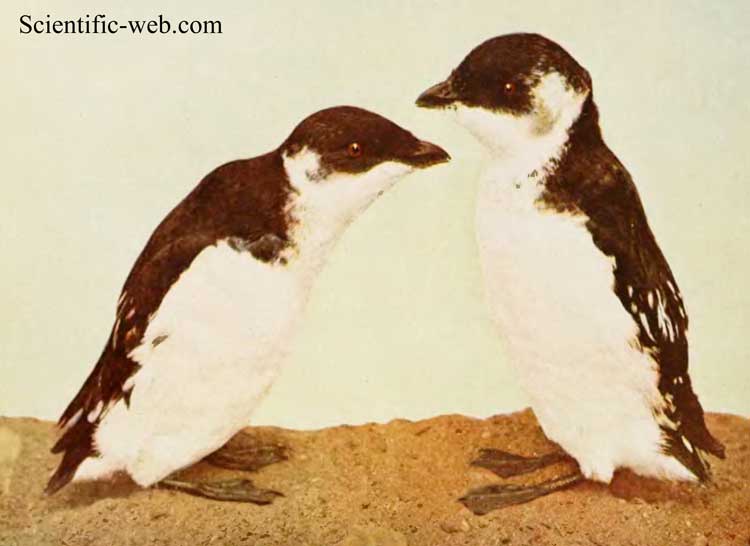
Alle alle, Photo: Michael Lahanas
Superregnum: Eukaryota
Cladus: Unikonta
Cladus: Opisthokonta
Cladus: Holozoa
Regnum: Animalia
Subregnum: Eumetazoa
Cladus: Bilateria
Cladus: Nephrozoa
Superphylum: Deuterostomia
Phylum: Chordata
Subphylum: Vertebrata
Infraphylum: Gnathostomata
Megaclassis: Osteichthyes
Cladus: Sarcopterygii
Cladus: Rhipidistia
Cladus: Tetrapodomorpha
Cladus: Eotetrapodiformes
Cladus: Elpistostegalia
Superclassis: Tetrapoda
Cladus: Reptiliomorpha
Cladus: Amniota
Classis: Reptilia
Cladus: Eureptilia
Cladus: Romeriida
Subclassis: Diapsida
Cladus: Sauria
Infraclassis: Archosauromorpha
Cladus: Crurotarsi
Divisio: Archosauria
Cladus: Avemetatarsalia
Cladus: Ornithodira
Subtaxon: Dinosauromorpha
Cladus: Dinosauriformes
Cladus: Dracohors
Cladus: Dinosauria
Ordo: Saurischia
Cladus: Eusaurischia
Subordo: Theropoda
Cladus: Neotheropoda
Cladus: Averostra
Cladus: Tetanurae
Cladus: Avetheropoda
Cladus: Coelurosauria
Cladus: Tyrannoraptora
Cladus: Maniraptoromorpha
Cladus: Maniraptoriformes
Cladus: Maniraptora
Cladus: Pennaraptora
Cladus: Paraves
Cladus: Eumaniraptora
Cladus: Avialae
Infraclassis: Aves
Cladus: Euavialae
Cladus: Avebrevicauda
Cladus: Pygostylia
Cladus: Ornithothoraces
Cladus: Ornithuromorpha
Cladus: Carinatae
Parvclassis: Neornithes
Cohors: Neognathae
Cladus: Neoaves
Ordo: Charadriiformes
Subordo: Alcae
Familia: Alcidae
Genus: Alle
Species: Alle alle
Subspecies: A. a. alle – A. a. polaris
Name
Alle alle (Linnaeus, 1758)
Synonymy
Alca alle (protonym)

Alle alle
References
Linnaeus, C. 1758. Systema Naturae per regna tria naturæ, secundum classes, ordines, genera, species, cum characteribus, differentiis, synonymis, locis, Tomus I. Editio decima, reformata. Holmiæ: impensis direct. Laurentii Salvii. i–ii, 1–824 pp DOI: 10.5962/bhl.title.542: 131. Reference page.
Vernacular names
brezhoneg: Kuilhig
català: Gavotí atlàntic
čeština: Alkoun malý
Cymraeg: Carfil bach
dansk: Søkonge
Deutsch: Krabbentaucher
English: Little Auk
Esperanto: Malgranda aŭko
español: Mérgulo atlántico
eesti: Väikealk
euskara: Pottorro txiki
فارسی: ماهیگیرک کوچک
suomi: Pikkuruokki
føroyskt: Fulkubbi
Nordfriisk: Letj alk
français: Mergule nain
galego: Arao pequeno
magyar: Alkabukó
íslenska: Haftyrðill
italiano: Gazza marina minore
日本語: ヒメウミスズメ
kalaallisut: Appaliarsuk
lietuvių: Mažoji alka
latviešu: Mazais alks
Nederlands: Kleine alk
norsk nynorsk: Alkekonge
norsk: Alkekonge
polski: Alczyk
português: Torda-anã
русский: Люрик
svenska: Alkekung
Türkçe: Küçük dalıcımartı
українська: Люрик
The little auk or dovekie (Alle alle) is a small auk, the only member of the genus Alle. Alle is the Sami name of the long-tailed duck; it is onomatopoeic and imitates the call of the drake duck. Linnaeus was not particularly familiar with the winter plumages of either the auk or the duck, and appears to have confused the two species.[3] Other common names include rotch, rotche,[4] and sea dove, although this last sometimes refers to a different auk, the Black Guillemot, instead.[5]
It breeds on islands in the high Arctic. There are two subspecies: A. a. alle breeds in Greenland, Novaya Zemlya and Svalbard, and A. a. polaris on Franz Josef Land. A small number of individuals breed on Little Diomede Island in the Bering Strait with additional breeding individuals thought to occur on King Island, St. Lawrence Island, St. Matthew Island and the Pribilof Islands in the Bering Sea.[6]
Morphology and behaviour
This is the only Atlantic auk of its size, half the size of the Atlantic puffin at 19–21 cm in length, with a 34–38 cm wingspan. The dovekie's weight ranges from 4.7 to 7.2 oz (134-204 g).[7] Adult birds are black on the head, neck, back and wings, with white underparts. The bill is very short and stubby. They have a small rounded black tail. The lower face and fore neck become white in winter.
The flight is direct, with fast whirring wing beats due to the short wings. These birds forage for food like other auks by swimming underwater. They mainly eat crustaceans, especially copepods, of which a 150 g bird require ~60,000 individuals per day (equivalent to 30 g of dry food weight),[8] but they can also eat small invertebrates and fish. Recent evidence suggests that the little auk feeds not by filter-feeding, but by visually guided suction-feeding.[9] They feed closer to the shoreline during nesting season, but when not nesting they scavenge for food in the open-ocean.
Little auks produce a variety of twitters and cackling calls at the breeding colonies, but are silent at sea.
Ecology
Little auks breed in large colonies on marine cliffsides. They nest in crevices or beneath large rocks, usually laying just a single egg. They move south in winter into northern areas of the north Atlantic. Late autumn storms may carry them south of their normal wintering areas, or into the North Sea. The species is also commonly found in the Norwegian Sea.[10]
The glaucous gull and the Arctic fox are the main predators on little auks. In some cases, the polar bear has also been reported to feed on little auk eggs.[11]
Conservation
Although populations appear to be decreasing, this is not currently thought to be rapid enough to be of concern for the species in the medium term, especially as global little auk numbers are generally rather fluid.[1] Little auks have been shown to be able to buffer fluctuations in prey availability, caused by climate change, via plasticity in their foraging behavior, which is likely to make accurate conservation assessments more difficult.[12]
As human food
Kiviaq is an Inuit dish from Greenland. It is made by stuffing a seal skin with 300 to 500 little auks. Once full and airtight, the skin is sealed with seal fat and the little auks are left to ferment for 3 to 18 months under a pile of rocks. Caught in spring, little auks are a human food resource in winter.[13]
Knud Rasmussen's death is attributed to food poisoning by kiviaq.
See also
Great auk
References
BirdLife International (2018). "Alle alle". IUCN Red List of Threatened Species. 2018: e.T22694837A131932114. doi:10.2305/IUCN.UK.2018-2.RLTS.T22694837A131932114.en. Retrieved 12 November 2021.
Gill F, D Donsker & P Rasmussen (Eds). 2020. IOC World Bird List (v10.2). doi : 10.14344/IOC.ML.10.2.
Jobling, James A (2010). The Helm Dictionary of Scientific Bird Names. London: Christopher Helm. p. 42. ISBN 978-1-4081-2501-4.
"Merriam-Webster.com Dictionary s. v. 'rotch'". Retrieved September 6, 2020.
"Merriam-Webster.com Dictionary s. v. 'sea dove'". Retrieved September 6, 2020.
Halpin, Luke R; Willie, Megan MC (2014-01-01). "First Record of Dovekie in British Columbia". Northwestern Naturalist. 95 (1): 56–60. doi:10.1898/NWN13-21.1. ISSN 1051-1733.
"Dovekie Identification, All About Birds, Cornell Lab of Ornithology". www.allaboutbirds.org. Retrieved 2020-09-30.
Harding, A. M. A.; Egevang, C.; Walkusz, W.; Merkel, F.; Blanc, S.; Grémillet, D. (2009). "Estimating prey capture rates of a planktivorous seabird, the little auk (Alle alle), using diet, diving behaviour, and energy consumption". Polar Biology. 32 (5): 785–796. doi:10.1007/s00300-009-0581-x.
Enstipp, Manfred R.; Descamps, Sébastien; Fort, Jérôme; Grémillet, David (2018-07-01). "Almost like a whale – first evidence of suction feeding in a seabird". Journal of Experimental Biology. 221 (13): jeb182170. doi:10.1242/jeb.182170. ISSN 0022-0949. PMID 29844199.
C.Michael Hogan (2011). "Norwegian Sea". In P.Saundry; C.J.Cleveland (eds.). Encyclopedia of Earth. Washington DC: National Council for Science and the Environment.
Isaksen, K.; Gavrilo, M. V. (2000). "Little Auk Alle alle". In Anker-Nilssen, T.; Bakken, V.; Strøm, H.; Golovkin, A. N.; Bianki, V. V.; Tatarinkova, I. P. (eds.). The Status of Marine Birds Breeding in the Barents Sea Region. Norsk Polarinstitutt Rapportserie. Vol. 113. Tromsø: Norwegian Polar Institute. pp. 131–136.
David Grémillet; et al. (2012). "Little auks buffer the impact of current Arctic climate change". Marine Ecology Progress Series. 454: 197–206. doi:10.3354/meps09590.
Freuchen, Dagmar (1960). Peter Freuchen's Adventures in the Arctic. New York: Messner. p. 81.
Further reading
Wikimedia Commons has media related to Alle alle.
Wikispecies has information related to Alle alle.
"Alle alle". Integrated Taxonomic Information System. Retrieved 24 February 2009.
Feathers of Little Auk (Alle alle)
Retrieved from "http://en.wikipedia.org/"
All text is available under the terms of the GNU Free Documentation License

